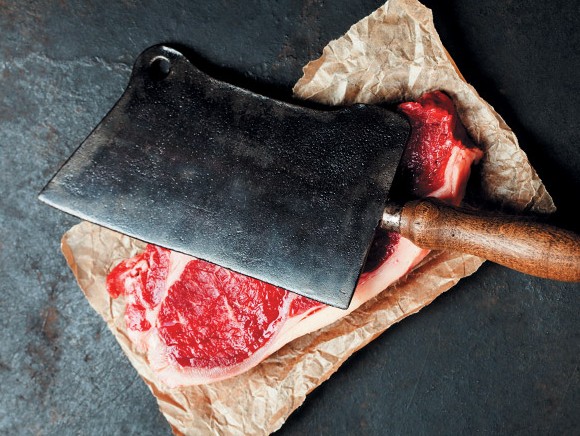
The ‘International Congress of Meat Science and Technology’ is an annual scientific congress where around 430 delegates from the worlds of science and business exchange knowledge on the current state of the meat industry from a scientific and technological perspective. ‘Think meat, think healthy’ was the main theme of the 61st edition.
Economic developments and urbanisation have caused a substantial increase in global consumption of animal protein: from an average of 61 grams per person per day in 1961 to 80 grams per person per day in 2011. Can this rise continue unabated? What are the consequences for the environment and food security? These are questions which bring together scientific, political, cultural, religious and environmental issues and demand answers. The various presentations during the conference illustrated that finding those answers will not be easy. Here are three scientific contributions relating to ‘the future of meat’.
Rise in meat consumption
Based on data gathered by FAO on 183 countries for the period 1961-2011, Dr. Pierre Sans (INP-Ecole Nationale Veterinaire, Toulouse) demonstrated the link between the annual gross domestic product (GDP) per capita and the level of consumption of animal protein and meat. Over recent decades, diets in emerging and developing countries have undergone a radical change. The increase in the consumption of animal proteins is a marker for the nutritional transition that is occurring in these countries, although meat consumption has not increased in all of them (see also Table 1). The ‘Westernisation’ of dietary habits takes various forms, and cultural and religious factors have a significant influence on these. FAO (2014) 1 expects this trend to continue over the next decade with an average annual growth rate of 1.6%, primarily in developing countries because that is where the growth in terms of income per capita, urbanisation and population size is strongest. Dr. Sans stated that this outlook invites us to identify new determinants of meat consumption (environmental awareness, public health, animal welfare, etc.) and to compare them against sustainability.
| Intake of protein [g/pers/day]
|
Argentina
|
Brazil | China
|
India
|
Japan
|
Spain |
| Animal protein 1961 | 65,9
|
18,0
|
4,2
|
6,1
|
26,1
|
28,1
|
| Meat protein 1961 | 51,9
|
10,0
|
1,7
|
1,7
|
3,7
|
9,8
|
| Animal protein 2011 | 64,1
|
49,0
|
37,2
|
11,9
|
48,7
|
65,8
|
| Meat protein 2011
|
44,3
|
31,6
|
20,0
|
1,8
|
16,9
|
33,1 |
Table 1: overview of GDP and changes in the consumption of animal protein
Five patterns
In order to forecast future meat consumption, Dr. Erik Mathijs (Bioeconomics, University of Leuven) looked back at diets through the ages.
He distinguished five main dietary patterns:
Different countries are in different phases of food transition depending on their stage of development. Nevertheless, Dr. Mathijs stated that the majority of growth in the demand for meat has already taken place, especially if we take into account the transition and hence the huge diversity within global consumption patterns. He said that he already sees a shift to the fifth pattern in many (mainly Western) nations. There should be a greater focus on total calorie intake rather than on reduced meat consumption, he stated.
Less meat
Dr. Chantal de Mouël (INRA, Rennes) provided a different view of the role of meat in feeding the world in the future (2050). She forecast that the global production and consumption of animal products, and especially meat, will rise. The extent of that rise will depend, among other things, on demographic and economic growth, urbanisation and improvements in livestock farming. FAO research from 2011 demonstrates that it is necessary to increase the worldwide agricultural production if we are to address the issue of global food security by 2050. In addition to a boost in agricultural production and productivity, the reduction of food losses and waste in the entire food chain needs to be prioritised. She also stated that she believes there should be restrictions on government policies focused on the development of first-generation biofuels from crops which are also used as food and animal feed. Furthermore, she regards it as being of major importance to reduce the consumption of animal products, and especially meat, in certain regions because animals are simply a less efficient way of converting energy into calories than crops are.
Vision
Analysis of the various presentations reveals that it is not easy to formulate a single, clear vision. Excessive consumption of animal products must be discouraged, but a reduction should not be recommended to poorer families or societies in patterns one to three, since they lack vital protein in their diet.
1 FAO(2014) , FAOSTAT: Food supply-livestock and fish primary equivalent. Retreived 10/01, 2015 from http://faostat3.fao.org/download/FB/CL/E
Source: ©Image licensed bij SignBiblio